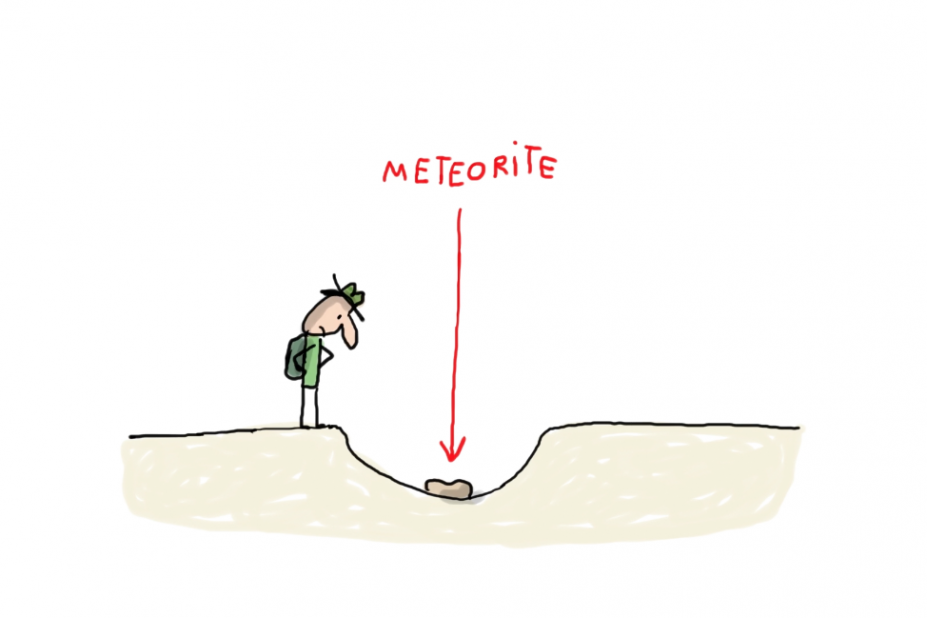Meteorites are stones from outer space that hit the Earth’s surface.
Most are the debris of asteroids, rocks that orbit the sun.
But could a meteorite land on our head?
Travelling through the atmosphere at 70 000 km/h, most of these bits of rock burn up and become ash.
But thousands of these rocks do hit the Earth each year.
They are difficult to find because many of them fall in the oceans or in uninhabited areas.
But not all! In 1803, a meteorite shower hit the French village of Aigle.
That’s when scientists understood that these strange stones came from outer space.
These black stones contain iron and are neither magical, nor are they gods’ poop as the Aztecs thought!
Often, they’re small enough to hold. But some are very big rocks, like the Caille meteorite weighing 625 kg!
Just imagine the size of the meteorite that formed the enormous Pingualuit crater in Canada; over 3 km across!
65 million years ago, scientists believe a heavyweight meteorite crashed to earth causing the extinction of the dinosaurs.
Fortunately, collisions with huge meteorites are very rare: they only happen once every 100 million years. Lucky us!





 Retour
Retour